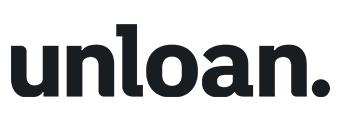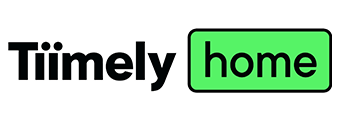If you're hunting a home loan, chances are you're comparing offers from banks and non-banks alike. You may have also noticed those promised by non-bank lenders can be more competitive than those advertised by banks – this is often the case.
Non-bank lenders are just that: Financial institutions that provide loans but aren't banks. But what does that mean and how are they different from traditional banks? Let's get into it.
What is a non-bank lender and how do they differ from banks?
At their most basic level, banks do two things: They provide loans and store customers' deposits. Their profits are generally the difference between the interest they charge on loans and the interest they pay on deposits. Banks also tend to operate out of branches and provide in-person services to customers.
Comparatively, non-bank lenders don't hold deposits. To make their money, they tend to undergo what's called securitisation (explained below). Fewer non-banks tend to operate branches as do banks and non-bank borrowers generally manage their loans online or over the phone.
For those reasons, non-banks generally have fewer expenses than banks and many pass their savings onto customers in the form of lower rates and more competitive home loan features.
What is securitisation?
It sounds complicated – and it can be if you get into the weeds of it. But at a headline level, securitisation means to bundle multiple assets (in the case of non-bank lenders, these assets are typically customers' loans) and sell them to investors. The investors then receive a portion of the interest borrowers pay.
Did you know? Banks are known as Authorised Deposit-taking Institutions (ADIs) – meaning they can accept customer deposits and are regulated by the Australian Prudential Regulation Authority (APRA).
Non-bank lenders, on the other hand, aren't overseen by APRA because they don't hold deposits. Instead, they're regulated by the Australian Securities and Investments Commission (ASIC), which enforces consumer protection laws and responsible lending obligations.
So, while banks and non-banks operate under different frameworks, both must lend responsibly and are held to account by Australian regulators.
Who might benefit from a non-bank lender over a bank?
Non-bank lenders come with plenty of advantages – but so do traditional banks. The right fit will depend on your personal preferences, financial situation, and how you like to manage your money.
For instance, you might prefer to keep all your financial products under one roof. In that case, a bank could be the better choice, offering savings accounts, credit cards, and a mortgage in one place.
On the other hand, if you have a patchy credit history or irregular income, a non-bank lender may be more flexible. While both banks and non-banks are regulated, banks must follow stricter lending rules – particularly when assessing a borrower's ability to repay. Many non-banks also specialise in non-standard lending, such as low-doc or specialist home loans, and can take a more personalised approach.
Other factors you might want to consider when choosing between a bank and a non-bank lender include:
| Consideration | A bank might suit you if... | A non-bank might suit you if... |
|---|---|---|
| Online vs in-person service |
You want face-to-face service and like to visit a branch when needed. | You're comfortable managing your loan online or over the phone. |
| Rates and fees | You prefer bundled deals or discounts for having multiple accounts with a bank. | You want the lowest rate possible and/or to avoid common home loan fees. |
| Credit score | You have a decent credit history and meet standard bank lending criteria. | You have a low credit score or irregular income and want a more flexible assessment. |
| Home loan needs | You value offset accounts (these are a type of deposit product). | You're looking for a non-standard loan type or a more personalised mortgage structure (e.g. low-doc, alt doc). |
| Application process | You don't mind waiting a bit longer for approval if it means dealing with a major lender. | You want a faster, more streamlined online application process. |
| Loan features | You need multiple offsets or linked banking tools. | You value a low rate over potential extras. |
| Brand trust | You feel more confident borrowing from a banking institution. | You're open to using a regulated lender that doesn't offer deposit accounts. |
Whether you're considering a home loan from a bank or a non-bank lender, it's important to compare rates, fees, features, and eligibility requirements before applying. Your ideal home loan will depend on your individual circumstances – and the right lender can make all the difference.
Need further guidance on finding the right home loan lender? Check out our resource for homebuyers and refinancers
Australia's prominent non-bank lenders
You might have come across non-bank lenders without even realising it. Some prominent non-bank lenders include:
| Non-bank lender | Info |
|---|---|
| Unloan | Owned by CommBank; offers low ongoing rates with automatic rate drops. |
| loans.com.au | Online lender with sharp rates, fast approvals, and specialty home loan options. |
| Tiimely Home | Formerly Tic:Toc; known for tech-powered fast approvals and a digital-only process. |
| Athena | Offers automatic rate matching, so existing borrowers never pay more than new ones. |
| Pepper Money | Specialises in flexible loans for self-employed or credit-impaired borrowers. |
| Reduce Home Loans | No-frills lender offering some of the lowest advertised rates in the market. |
| Liberty Financial | Offers a wide range of specialist loans, including low-doc and SMSF options. |
Low-rate mortgage deals from non-bank lenders
In the market for your first or next home loan? These deals from non-bank lenders might catch your attention:
Lender Home Loan Interest Rate Comparison Rate* Monthly Repayment Repayment type Rate Type Offset Redraw Ongoing Fees Upfront Fees Max LVR Lump Sum Repayment Extra Repayments Split Loan Option Tags Features Link Compare Promoted Product Disclosure
Promoted
Disclosure
Disclosure
Image by wJ on Unsplash










Share